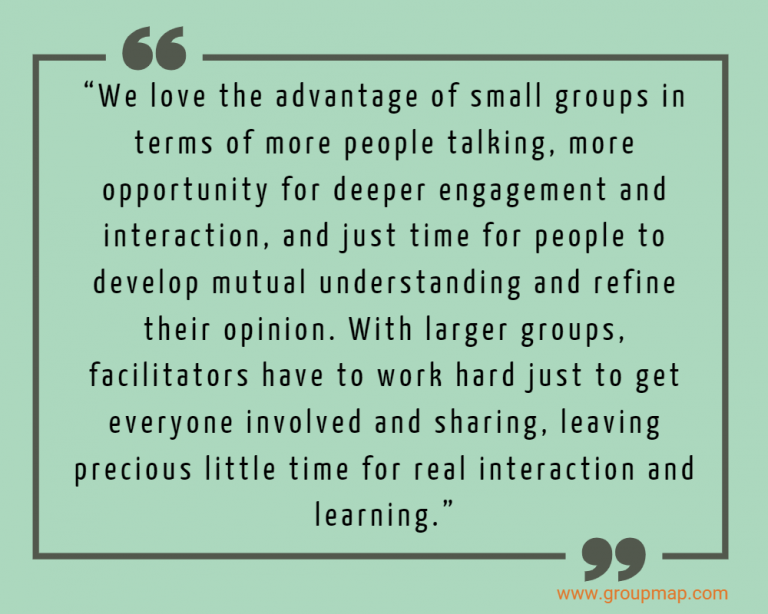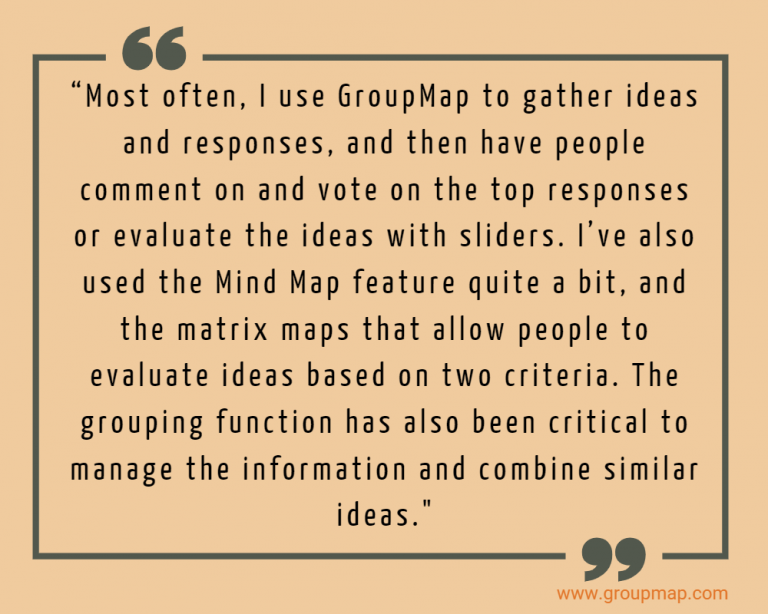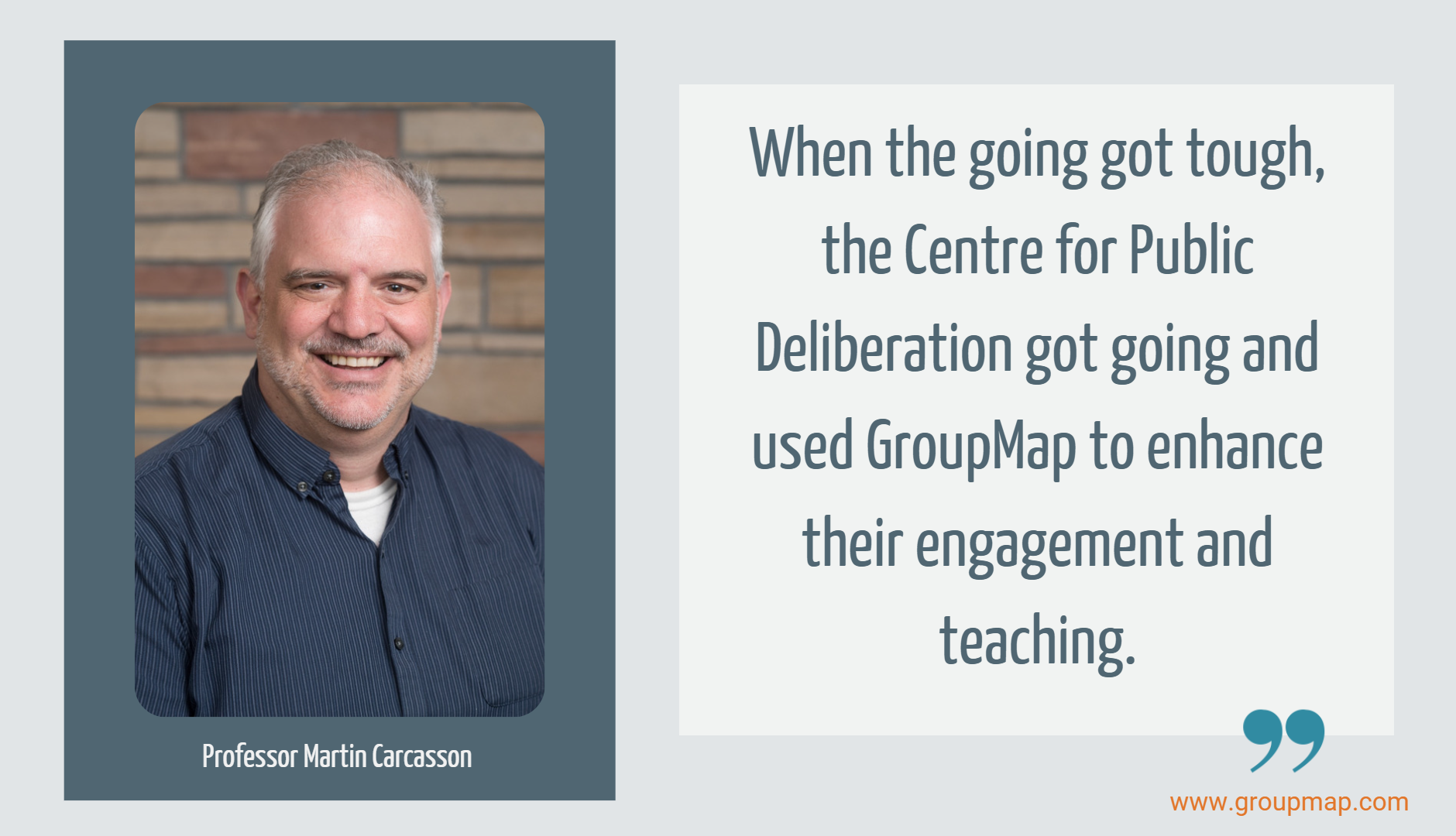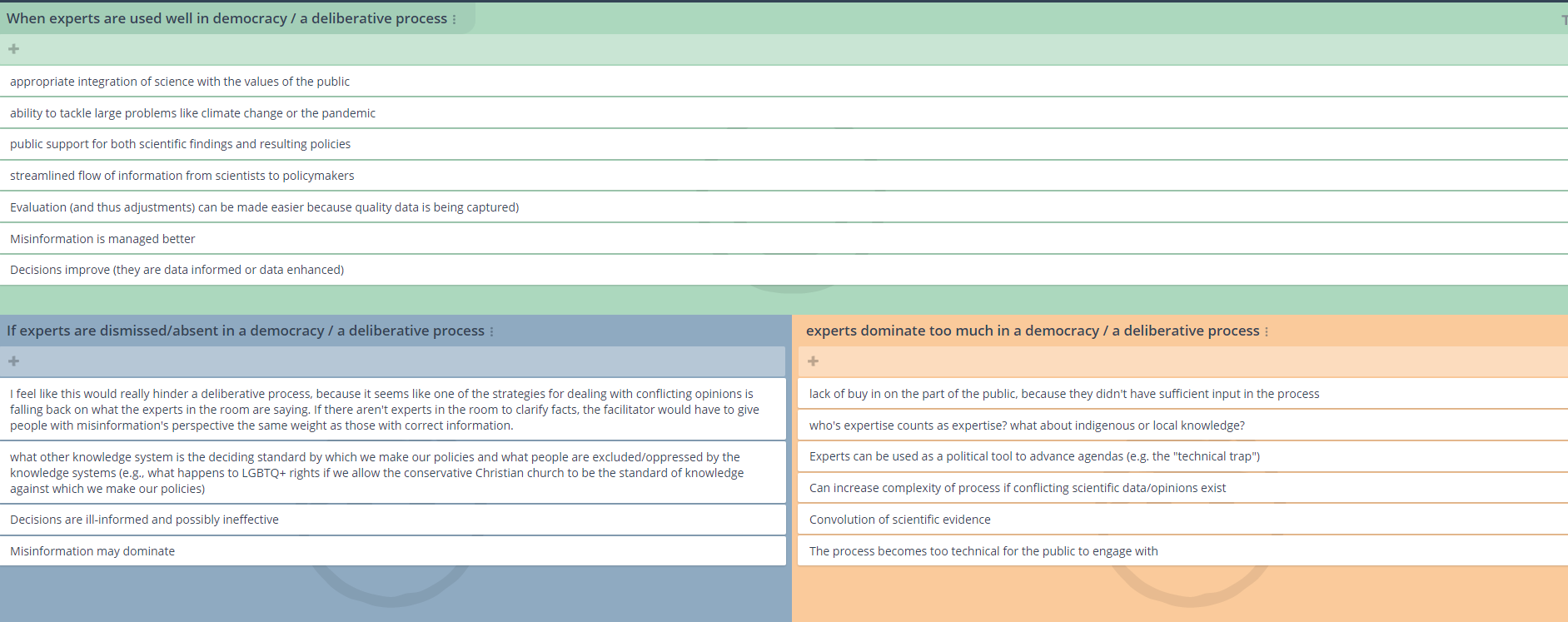With the aim of improving the way their community discusses complex issues in order to arrive at better decisions, the Colorado State University Centre for Public Deliberation is an impartial resource for the local northern Colorado community, that is able to assist local government, schools, and community organizations in problem-solving key issues.
Core to the CPD’s process is working with partners to invite those affected by the issue ‘into the room’ where students trained in small group facilitation guide participants through sometimes challenging conversations.
So, what happens when no one is leaving their own home let alone stepping foot into ‘the room’?
As a result of the pandemic, like many other organizations, the CPD needed to quickly pivot and take those conversations online without eroding their effectiveness.
Professor Martin Carcasson, the Director of the CPD and a Communication Studies academic, shared with us how he and his team used GroupMap to embrace the challenges they faced and realized the opportunities offered by online facilitation with GroupMap.
Since 2006 the CPD has served its community through its efforts to enhance local democracy. They work with their city and county governments, school districts, and community organizations to increase the capacity needed to address difficult shared problems, and elevate the overall quality of conversation and engagement regarding those issues.
It has done so by creating open spaces for citizens to come together equipped with information and skilled facilitators to explore important issues relating to community problem solving and public decision making.
The CPD trains Colorado State University undergraduate students as facilitators; their team of 30 can turn an audience of around 100 participants into small groups, thereby paving the way for vastly different conversations to take place and avoiding the problematic experience of participants speaking one at a time at a microphone and simply talking past each other.
Prior to the COVID pandemic, the majority of the CPD’s small group discussions happened in person.
“Covid obviously forced us to quickly adapt and move online,” said Professor Carcasson “though, as a silver lining, it fast forwarded everyone’s comfort with online meetings, so it actually opened up a lot of opportunities for us”.
“As we looked into various options of software to use to assist with our processes once we moved online, we learned about GroupMap, and it seemed the best fit to what we needed.”
“I came across GroupMap in two ways at about the same time. I was helping a local facilitator, Chris Hutchinson of the Trebuchet Group, with a project, and he used GroupMap. I also had a graduate student with the CPD do a project last semester exploring various online platforms for synchronous engagement which led to the NCDD Online Engagement Showcase. GroupMap was one of the platforms that participated in that event.”
Easier group discussions that deliver deeper engagement
In addition to making the online transition easier, GroupMap helped address other challenges associated with group engagement.
“The problem with small groups, however, is you are limited in the natural diversity (demographic and viewpoint) of the group, and participants are always curious what is going on with the rest of the participants.”
Prior to their use of GroupMap, the CPD used an audience response system during in person events whereby participants submitted responses to questions using a small handset. To connect the large group and small group processes, multiple choice questions were posed that the whole group could answer and then respond to in the small group. However, this approach was limited to the multiple choice format.
The CPD then switched to an online service that used participants’ smart phones, which meant participants could respond to open ended questions. Although this allowed the CPD to move beyond a multiple-choice structure, the response flow remained rigidly one-way.


Meaningful Online Conversations
“As we moved online, we saw GroupMap as a much more flexible and interactive version of this. It allows us to not only get input from the large group, but people can also comment on each other’s ideas, as well as voting and prioritizing those ideas”.
Professor Carcasson’s work aims to allow people to express their opinions, then interact with each other’s ideas and work to elevate those that are stronger. He notes that while GroupMap facilitates both of these endeavors, he perceives the second is crucial.
With this in mind, Professor Carcasson aligns his group and map management to bring the greatest value to his discussions.
“We have successfully used GroupMap with Zoom breakouts to have small group discussions with multiple groups on the same map.”
“We like small discussion groups of around six to eight, but GroupMap groups of around 40, so maybe five to six small groups per map. We have student facilitators in each group helping explain things and spark discussion, while a separate facilitator watches the map. We have run some processes with 120 people, so we had numerous small groups but four separate maps. It enabled us to collect wonderful ideas and get have people prioritize and engage.”
“One map template I’ve created and used a lot is a Polarity Map, based on the work by Barry Johnson. GroupMap has been very helpful for me to help people create polarity maps and for me to have a place to brainstorm and refine my maps.”
“GroupMap helped participants see more ideas from the entire room – not just those generated in their small group – while also likely working better for introverts that prefer to write than speak. I think that is a critical aspect of GroupMap, since most of our processes are inherently biased toward extroverts that like to think out loud and can dominate processes. GroupMap provides some nice balance to that situation.”
Overall, GroupMap has had a positive impact on the work of Professor Carcasson and his team.
Enriching learning with asynchronous collaborations
Professor Carcasson has continued to innovate with GroupMap.
“In terms of my teaching, GroupMap has been very useful to integrate synchronous and asynchronous work. I like to have my students engage the readings between classes and start the conversation online, so then our in-class discussions can be much richer. Doing that well has always been a challenge, and GroupMap has provided new strategies that have worked very well so far.”
“One other thing we’ve done that I really liked that GroupMap facilitated was engaging alumni of our program (or, alternatively, allowing people not at the initial meeting to react to and contribute to an exercise). We have a facilitation training exercise in which students react to a variety of problematic statements and design a response to reframe them. We used GroupMap to collect the initial ideas and have people respond or talk through them. I was also able to send the link to our alumni through social media, which allowed them all to engage.”
The CPD has found the response to GroupMap has been very positive.
“The fact that people can publicly see the information and can be sent a view link afterwards to engage it is also important to transparency.”
“Students have enjoyed GroupMap because it is a significant improvement upon writing a paragraph response on the reading at the course website. I use a single map to ask questions like –
- What is something that you want to talk about more?
- What is something you disagree with or want to push back on or didn’t make sense?
- What is something that gave you an Aha moment during the reading?
- What questions do you have?
Students populate the four questions between classes, and the night before, I ask them to all rank which responses they most want to discuss in class. I use that ranking to finalize the class discussion and process.”
GM Written with the kind collaboration of Professor Martin Carcasson Director of the CPD.


